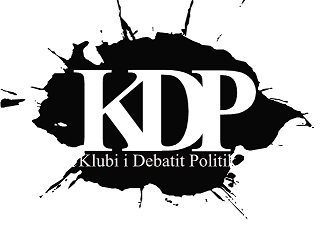Author: Sefer Selimi Jr.
On December 3 and 4 at the London Summit, the North Atlantic Treaty Organization – NATO celebrated its 70th anniversary this year. This political-military Alliance was founded to precede the possible aggression by the Soviet Union against the democratic countries in the post-Second World War period, succeeding in securing peace and security throughout its existence. Its role was essential to the whole Cold War period and as a guarantor of military defense enabled democratic and economic development in all its member states. Today, the Alliance includes 29 countries, awaiting the accession of North Macedonia as its 30th ally.
Historical Significance – World War II ended with the creation of bipolar competition between East and West. The ‘Iron Curtain’ in Berlin was the symbol of the Cold War that characterized the World for 50 years, largely filled with wars of intelligence services, nuclear weapons and technological development of military and indirect wars in third countries. The recovery of Western Europe through the Marshall Plan enabled the proliferation of Marxist-Leninist Communism to curb and create the conditions for the development of democracy and socio-economic development in the countries that would later establish the European Union we know today. NATO in this section will play the role of defender of this development and advancement of democratic values. Taking into account collective defense and sophistication of military capabilities, Article 5 of the Treaty enabled the possible adventures of the Soviet Union, an article that states, ” attacking one of the member states is an attack on all states ” and consequently implies that all his allies will be in his defense. This principle provided fragile peace until the fall of the Berlin Wall, which was the beginning of the collapse of the Soviet Union’s communist empire.
Post-Cold War Transformation – With the democratic system’s triumph over the communist system, the World was faced with new challenges. The Russian-dominated Warsaw Pact, NATO’s counterweight was now history. The Central and Eastern European states abandoned the Soviet Union and the wave of major democratization in Europe began. Almost all of these states were now candidates for NATO membership, and most of them joined in the period of 1999 and 2004. This expanded the scope of Alliance outreach, an alignment that would arouse nervousness and opposition from Russia recovering under its leadership, Vladimir Putin. The main characterization of this period will remain the first military interventions in the Gulf War, Bosnia and Herzegovina and Kosovo during the wars of the Yugoslavia breakup. These interventions turned NATO from a passive actor into an active actor in order to guarantee peace and stability.
The Big Change – Until 2001, NATO continued to play its leading role in collectively protecting member states from external military aggression. Its mission expanded with the September 11, 2001, terrorist attacks on the United States of America. In the subsequent period, terrorism would be the Alliance’s main challenge, and virtually all resources were directed at fighting this danger. This would also bring about the first US-led activation of Article 5, which was subsequently confirmed by all the Allies and resulted in the first military missions outside the North Atlantic Area in Iraq and later in Afghanistan and Libya. Even today, the war against terrorism continues to be one of the Alliance’s top priorities and is seen as one of the major security challenges for the citizens of member states.
The Return of the Russian Risk and the Increasing Chinese Impact – Although the main focus after 2001 was the war against terrorism, NATO continued to maintain in its mission the primary goal – to restrict the risk posed by Russia. This risk has been reactivated in recent years with Russia’s increasing intervention through non-conventional hybrid attacks on NATO member states, but not only with that. Interference in the US presidential election and in the European Union was the main alarm for returning to the Russian focus. Today, Russian intervention is at its zenith in the Baltic states, Central Europe, and the Balkans to undermine democratic systems and destroy the European Union as the ultimate goal. In addition to Russia, NATO member states also have a global competitor, and this is China, which has been aggressively expanding in recent years to extend its political and economic influence globally. The concluding statement of this year’s summit placed for the first time the focus of the alliance on China’s Growth, which means expanding the mission of the organization greatly at the insistence of the main ally – the United States of America.
The Challenges of the Future for NATO – Although NATO is the most successful political-military alliance of all time and its dominance is absolute, the major current challenges come from within. Recent frontal clashes between some of the key allies and apparent differences over key security issues, such as the conflict in Syria, are causing nervousness and uncertainty in the alliance’s internal cohesion. Overcoming them will be difficult, but the alliance has proven in the past that it is more sustainable than the egos and caprices of current leaders because it guarantees the greatest value for its citizens – freedom. Therefore, the future key challenge will remain technological and military dominance, especially in controlling the on-going 5G technology and increasing collective sustainability to hybrid attacks aimed at losing public confidence in a democratic governing system.

